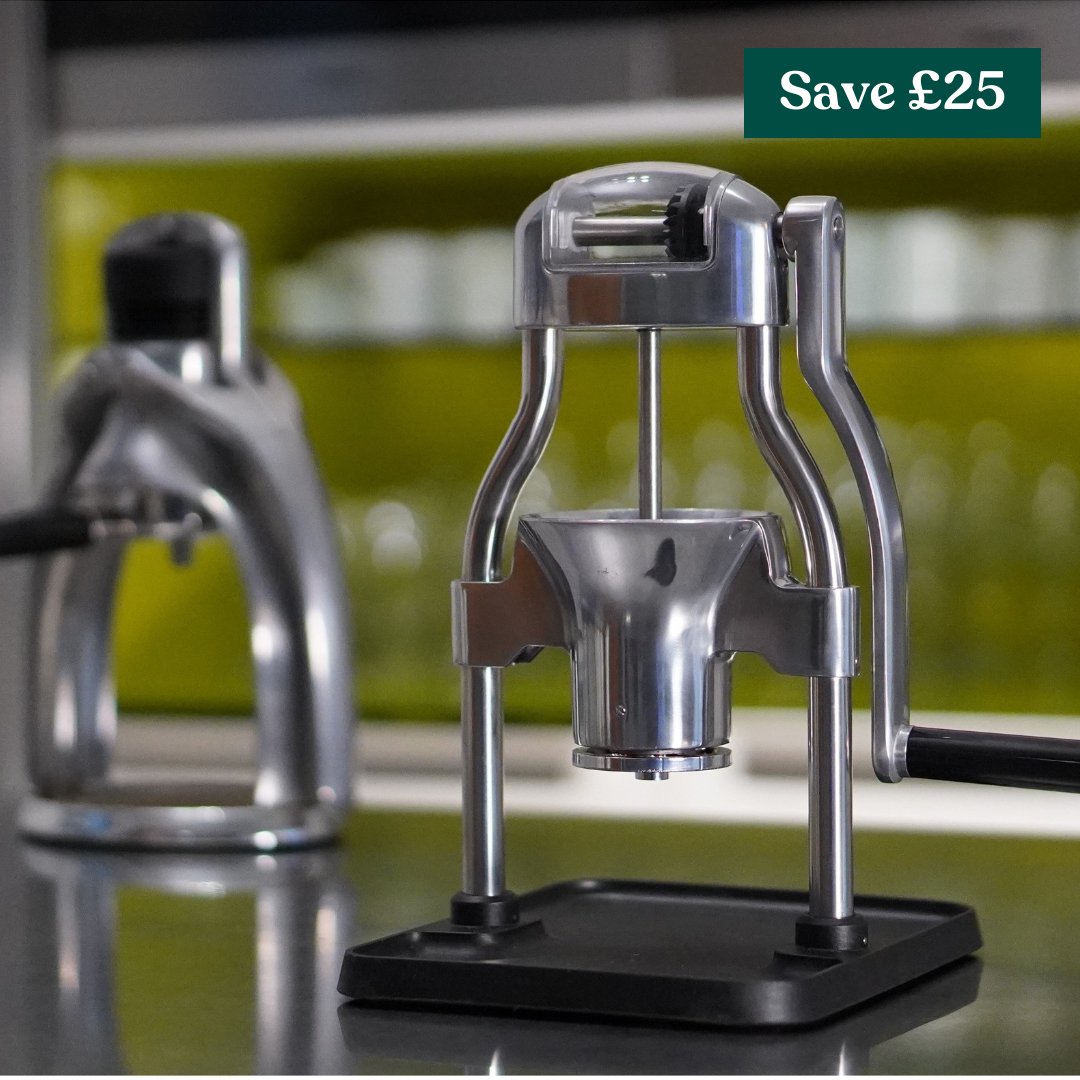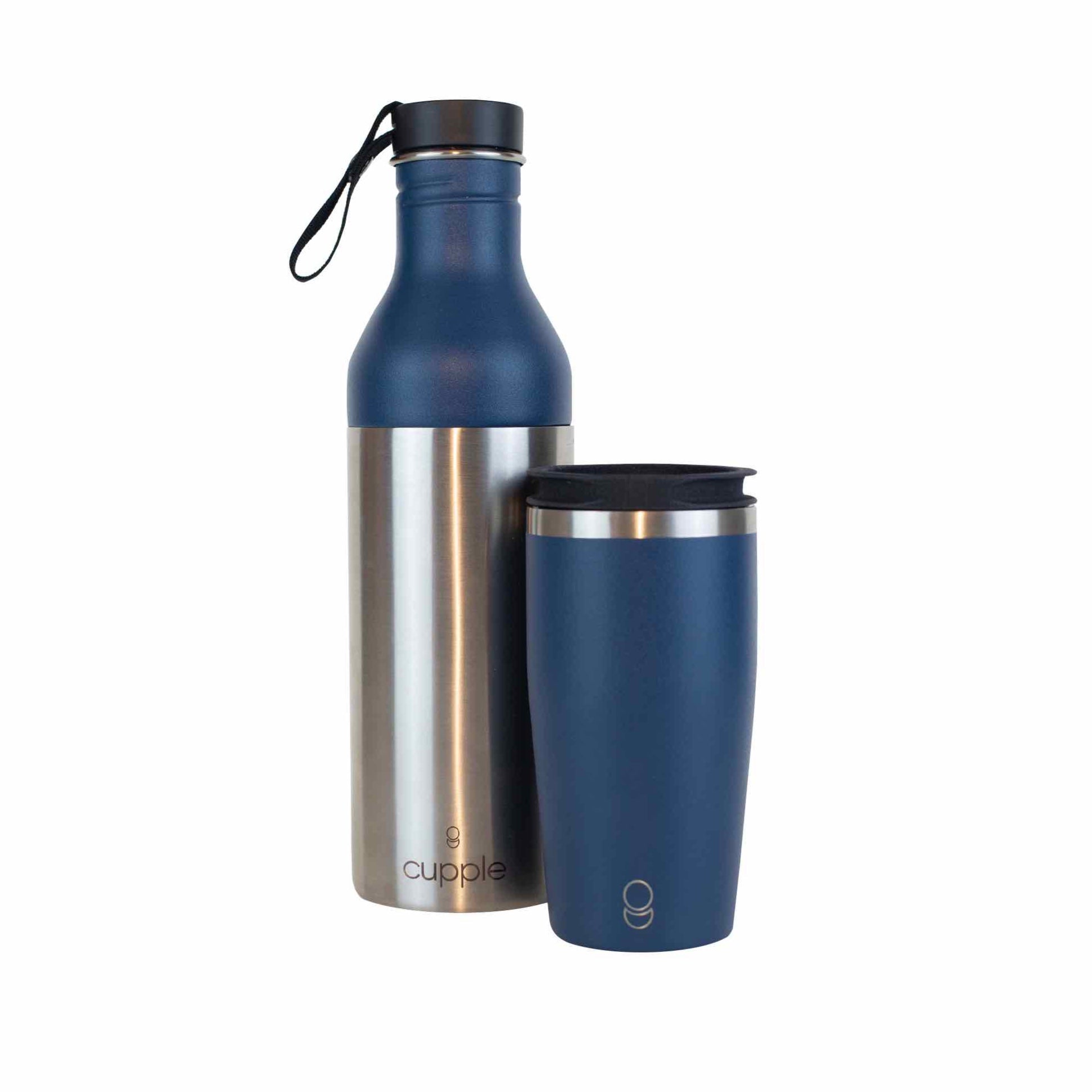If you look inside your kitchen cupboard or open your cutlery drawer, there’s a good chance you already have a great deal of stainless steel in your kitchen. A lot of it might be years or decades old, and still looking about the same as when you bought it.
Not only is this metal exceedingly strong, it shrugs off all sorts of everyday corrosion that would rust other metals in no time. But what makes stainless steel different from iron? And how can you unlock its full cooking potential? If you’re curious about this long-lasting everyday alloy, read on - we’re about to take a deep dive into why we love it.
What’s so great about stainless steel?
Sturdy, rust-free and hygienic. Much better than a plastic washing up bowl.
Stainless steel is strong - really strong - but its main benefit comes from its excellent resistance to corrosion. Other metals, such as iron or copper, are prone to rusting when exposed to moisture and air. This is why iron pans need to be seasoned. A stainless steel bottle, on the other hand, can carry water 24/7 without even becoming tarnished.
Like many metals, stainless steel is strong and conducts heat. Combine this with being unreactive and easy to clean, and you have a material that can lend itself to all sorts of uses - especially when it comes to food, where heat and moisture often take their toll.
Stainless steel makes sturdy, low-maintenance cookware, shiny cutlery and hygienic worktops. Plus, lots of common plastic items (food containers, pegs, washing up bowls, bottles) fare far better when made of stainless steel. Whereas plastic has a tendency to stain, crack and harbour smells, stainless steel can remain unchanged for a lifetime.
What is stainless steel made of?
The exact composition of stainless steel can vary, but it always contains chromium.
Stainless steel is an iron alloy, meaning other elements have been added to the iron to give it specific properties. Whilst the recipe can change, chromium is the consistent ingredient that makes stainless steel so useful. It’s the secret to its excellent rust resistance.
Want to get a little technical? The chromium protects the metal by forming a microscopically thin layer of chromium oxide on the surface. The chromium oxide is inert, preventing corrosion from spreading throughout the metal. The layer is even self-healing if scratched.
What is 18/10 stainless steel?
18/10 is the best grade of stainless steel you can get - this cutlery could last a lifetime of use and beyond.
You might have noticed that a lot of the stainless steel products we sell are described as ‘18/10’ stainless steel, or occasionally ‘18/0’. These numbers, which you’ll most often see referenced with cutlery and cookware, refer to the quantities of chromium and nickel in the stainless steel.
When it comes to kitchenware, 18/10 is the best stainless steel you can get. It contains 18% chromium and 10% nickel. As well as having excellent corrosion resistance from the chromium content, the addition of nickel further enhances rust resistance, heat resistance, weight and shine.
Cheaper 18/0 stainless steel, which contains 18% chromium but no nickel, is still highly rust resistant - you can put 18/0 cutlery in a dishwasher without worrying. However, it could corrode in acidic environments, it might lose its shine more quickly, and it’s bendier than 18/10.
What is tri-ply stainless steel?
This heavy-bottomed saucepan has an aluminium core inside the stainless steel.
For all its benefits, stainless steel is not a very efficient conductor of heat. This is why the best stainless steel cookware has a ‘tri-ply’ construction, meaning a more conductive metal is sandwiched between two layers of stainless steel.
This conductive middle layer is usually aluminium, though copper is occasionally used too. These metals provide faster, more even heating by helping it spread rapidly throughout the pan. The tri-ply layering tends to only be present in the base of a pan, but a ‘fully clad’ tri-ply pan will have the core going up the pan walls as well.
How do you cook on stainless steel without food sticking?
Professional chefs favour stainless steel over non-stick for frying - and it’s not just because they’re tougher.
Most people use their stainless steel pans for boiling and stewing - which they’re perfect for. But many home cooks don’t realise that they’re great for frying and searing too. The thing is, if you’re used to non-stick pans, frying on stainless steel takes a little getting used to.
The secret to frying on stainless steel is to preheat your pan thoroughly. If you put food straight into a cold, or even warm pan, it will stick to the surface as it cooks. This is because the little ‘pores’ in the metal open up as it heats, and will latch onto your food if they aren’t nice and hot.
How do you know if your pan is hot enough? Try throwing a droplet of water on the pan. If it sits there, too cold. If it bubbles and steams, still too cold. If it forms a bubble of water that rolls and dances around the pan, it’s time to add your oil! Wait for it to smoke a little before adding your food. Don’t touch it until it’s thoroughly browned, and it will come away easily.
Preheating can take several minutes, and this might all sound like a bit of a hassle. Why not just use a non-stick? It’s because if you want a crisp, golden crust on your food, stainless steel does a much better job of this. Plus, the ‘fond’ - the sticky golden bits you scrape up to make delicious sauces - don’t form on non-stick (because, well, nothing sticks).
How should you look after stainless steel?
Stainless steel is tough and low-maintenance - no seasoning or special cleaners required.
Stainless steel is generally pretty low-maintenance - if anything does stick to your cookware, you can soak it overnight without worrying about rust, and it can handle steel wool as well (though it can get scratched). Stainless steel tends to be dishwasher safe, too.
If you have an item with a very shiny surface, you could polish it with a stainless steel polish. However, this is purely cosmetic - skipping this shouldn’t affect the function of your product. Generally, a regular sponge and washing up liquid is all you need to clean stainless steel.
What are the differences between cooking on stainless steel and iron pans?
They look very different - but both are highly versatile, great for searing food, and they’ll last a lifetime.
If you’re weighing up stainless steel pots and pans against iron (such as Solidteknics wrought iron or Emba cast iron), there are a few differences you should be aware of - but they’re more similar than you might expect.
Seasoning
The main difference between stainless steel and cast iron is that iron needs to be seasoned. This process of cooking on layers of oil protects the iron from corrosion. Iron pans need to be dried carefully (to prevent rust spots) and washed gently (to protect the seasoning layer). Stainless steel, on the other hand, needs no protection from rust, and is very low maintenance.
However, seasoned iron has the benefit of becoming non-stick - and it improves with use. It’s not as non-stick as Teflon, but good enough to fry an egg in. Stainless steel is more ‘sticky’, so you need to take care to thoroughly preheat and oil the pan to prevent sticking. Even then, eggs are a gamble.
Heat
To prevent sticking and to achieve a good sear when frying, both cast iron and stainless steel pans should be thoroughly preheated before you add your food. Tri-ply stainless steel heats up faster and more evenly than cast iron, and it’s also more responsive - meaning if you turn the heat off, your pan will cool down relatively fast.
Cast iron is slower to heat than tri-ply stainless steel, and it heats less evenly. However, it holds heat for a long time, and also radiates that heat out. This makes it great for cooking things all the way through, like potatoes and chicken - but it’s less responsive to temperature changes.
Versatility
Acidic foods, such as slow-cooked tomato sauces and wine, can react with cast iron pans and damage the seasoning. Stainless steel, however, can handle these foods without a problem. Both stainless steel and cast iron can go from stovetop to oven, so long as the handles are made of metal. This is ideal for searing food and then finishing it off in the oven.
Both types of pan have their strengths. That’s why we always keep both in our kitchen. Want to learn more about cast iron? Read all about this material here.
You can browse our full cookware range here. Considering other pan materials? This article might help you choose.






































